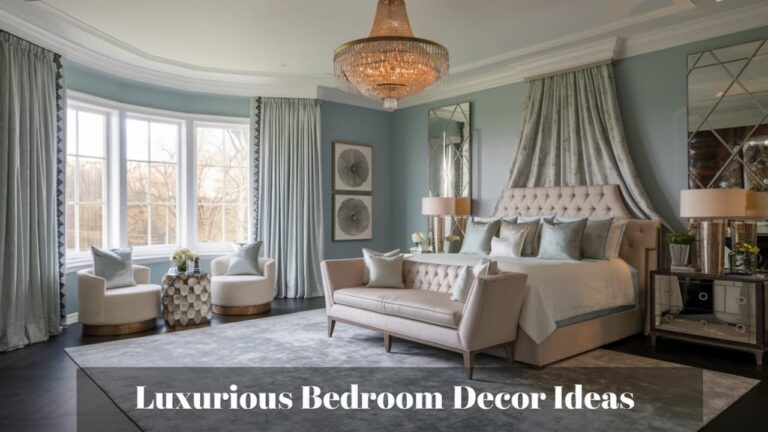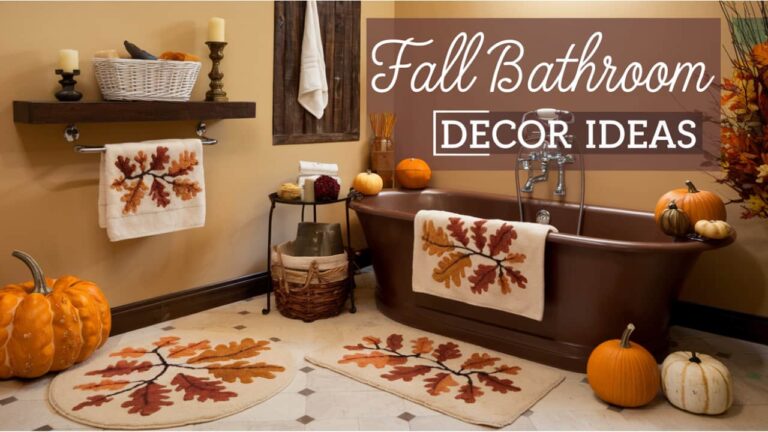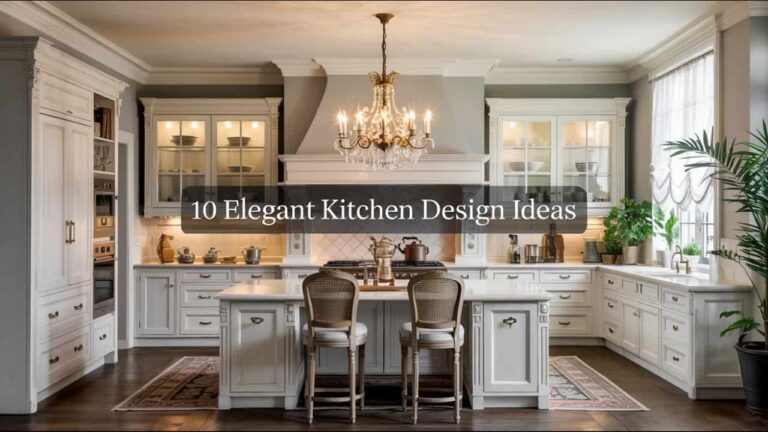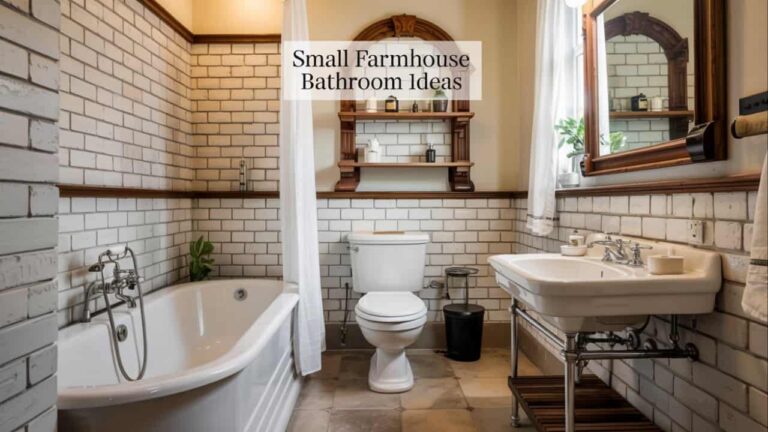Top Facade House Design Ideas to Make a Lasting First Impression

A well-crafted Facade House Design is essential to defining the overall character and curb appeal of a home.
It’s the first impression your property makes, setting the tone for the architectural style, mood, and functionality that lies beyond the front door.
Whether traditional or modern, minimalist or bold, the facade is where aesthetics meet performance—incorporating elements like lighting, symmetry, materials, and layout.
Choosing the right Facade House Design can enhance natural light, increase energy efficiency, and significantly elevate the home’s value.
Beyond looks, it also plays a role in weather protection and privacy.
As architectural trends continue to evolve, homeowners are prioritizing facade designs that not only stand out but also serve practical purposes.
If you’re planning a new build or a renovation, understanding the principles of a strong Facade House Design is the key to creating a timeless and impactful exterior.
Best Facade Design Ideas for Your House
Your home’s facade is its visual identity—it’s the first thing guests, neighbors, and even buyers will notice.
A beautifully designed facade does more than look good—it reflects your personality, complements the architectural style, and enhances curb appeal.
Whether you’re planning a complete renovation or building from scratch, here are some of the best facade house design ideas to consider for your home.
1. Modern Glass Facade
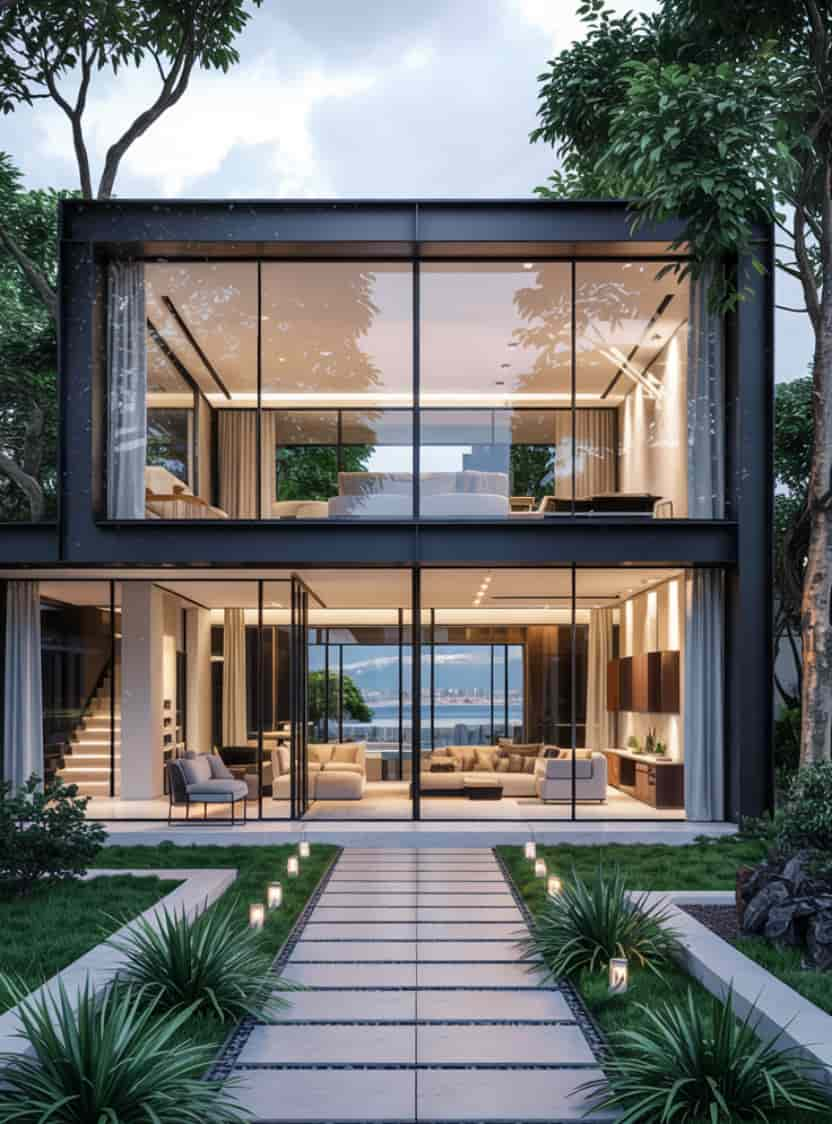
A modern glass facade is the epitome of sleek, sophisticated design that blurs the line between indoors and outdoors.
With large floor-to-ceiling windows or expansive glass walls, this facade style floods interiors with natural light while showcasing panoramic views.
It creates an open, airy ambiance that instantly elevates a home’s look and feel.
Minimalist black or aluminum framing adds contrast and structure, while the transparency of the glass enhances spatial flow.
Whether used in a city setting or overlooking a natural landscape, glass facades offer timeless elegance.
For added privacy and thermal efficiency, homeowners can incorporate double glazing or tinted options.
This style is perfect for modern homes that prioritize light, views, and clean lines.
2. Wooden Slat Facade
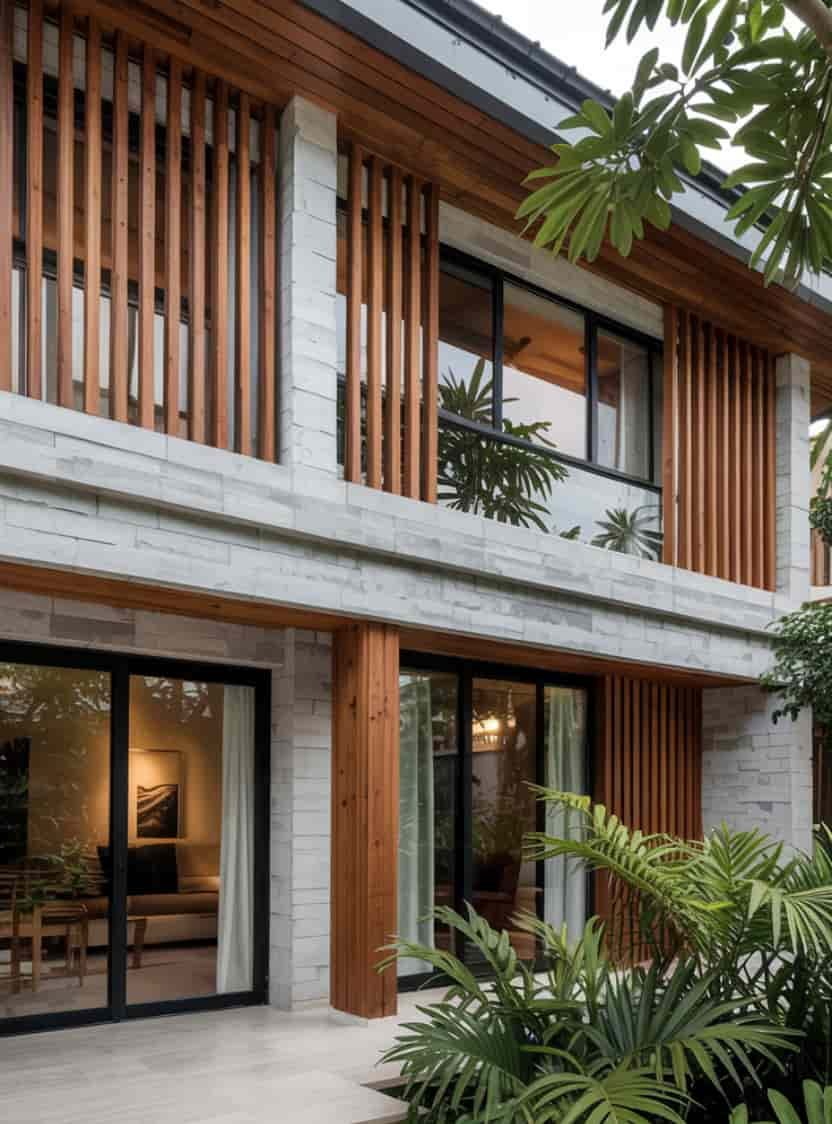
Wooden slat facades bring natural texture and warmth to a home’s exterior while adding functional benefits like shading and ventilation.
Typically installed vertically or horizontally, these timber slats create a rhythmic pattern that adds depth and architectural interest.
Ideal for both modern and tropical designs, they blend beautifully with other facade materials such as concrete, white stucco, or black steel.
Beyond aesthetics, wooden slats can act as privacy screens and sun filters, making them perfect for large windows or exposed areas.
Timber choices like teak, cedar, or pine offer rich color and grain while being durable enough to withstand weather changes.
Over time, they age gracefully, turning silver-gray and adding character. A wooden slat facade feels grounded, sustainable, and design-savvy.
3. Stone and Concrete Fusion

Combining the rugged charm of stone with the clean geometry of concrete results in a facade that is both earthy and refined.
Stone brings organic texture and history to the exterior, while concrete offers strength, modernity, and versatility.
This fusion works particularly well for contemporary homes aiming for a bold and grounded look.
Use stone at the base level, on pillars, or as an accent wall, while concrete frames the structure or defines volumes.
Together, they provide contrast in both tone and texture, allowing for a multidimensional facade.
The materials pair exceptionally well with glass and timber, creating a harmonious blend of natural and industrial design.
Durable, weather-resistant, and visually powerful, this facade style speaks of craftsmanship and timeless architectural integrity.
4. Black and White Contrast

The classic black-and-white facade remains one of the most popular choices in both modern and traditional architecture due to its bold elegance and striking simplicity.
White walls provide a clean and bright canvas that enhances spaciousness and light, while black trims, window frames, doors, and accents add definition and modern flair.
This timeless duo complements a variety of materials, including brick, wood, metal, and stone.
Whether applied to a minimalist home or a classic colonial, the contrast draws attention to architectural shapes and details.
Thoughtful landscaping—like neatly trimmed hedges or black planters—can further enhance the effect.
A black-and-white facade is low-maintenance, stylish, and universally appealing, making it a foolproof option for a standout exterior.
5. Curved Facade Elements
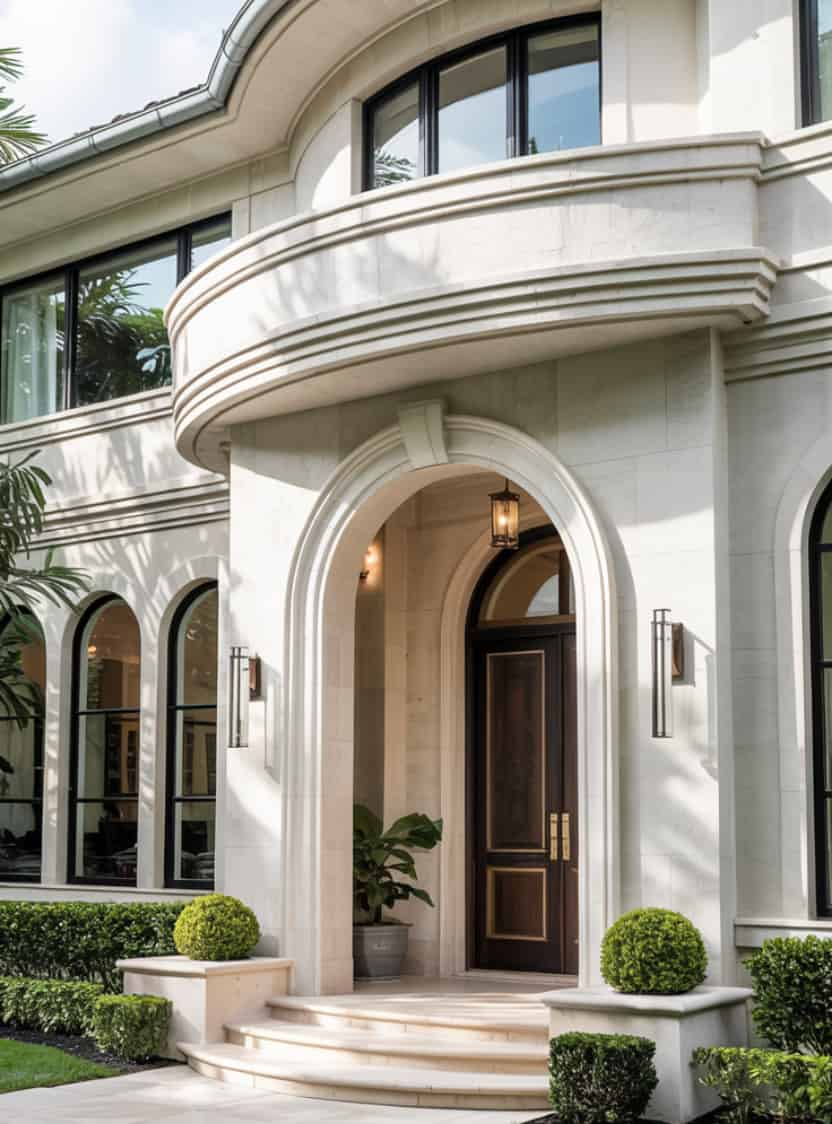
Curved facade elements bring softness, elegance, and a touch of luxury to any home exterior.
Arched doorways, rounded walls, or sweeping balconies break the monotony of straight lines, adding architectural fluidity and charm.
These organic shapes are common in Mediterranean, Spanish, or even futuristic homes, offering both visual interest and functional flow.
Curves tend to reflect and scatter light differently, resulting in a dynamic play of shadows throughout the day.
They also encourage a sense of welcoming movement, especially in entrance zones or garden-facing areas.
When paired with materials like smooth stucco, glass, or terracotta, curved forms feel even more refined. This style adds grace and timeless sophistication to any facade.
6. Brick with Modern Accents

Brick facades offer enduring beauty and timeless appeal, but when paired with modern elements, they gain a stylish and updated twist.
Classic red or muted gray bricks bring warmth and texture, while contemporary additions—such as black steel-framed windows, glass railings, or minimalist doors—give the facade a bold and balanced aesthetic.
Using brick in unique patterns like herringbone, stacked bond, or basket weave adds artistic flair and subtle dimension.
To modernize further, consider painting the brick in soft whites or charcoals for a clean and fresh look.
Brick is not only visually appealing but also durable, low-maintenance, and energy-efficient.
It pairs well with timber, concrete, and metal for a mixed-material facade that feels rich and layered.
This combination blends the nostalgia of tradition with the crisp lines of modern architecture.
7. Green Facade
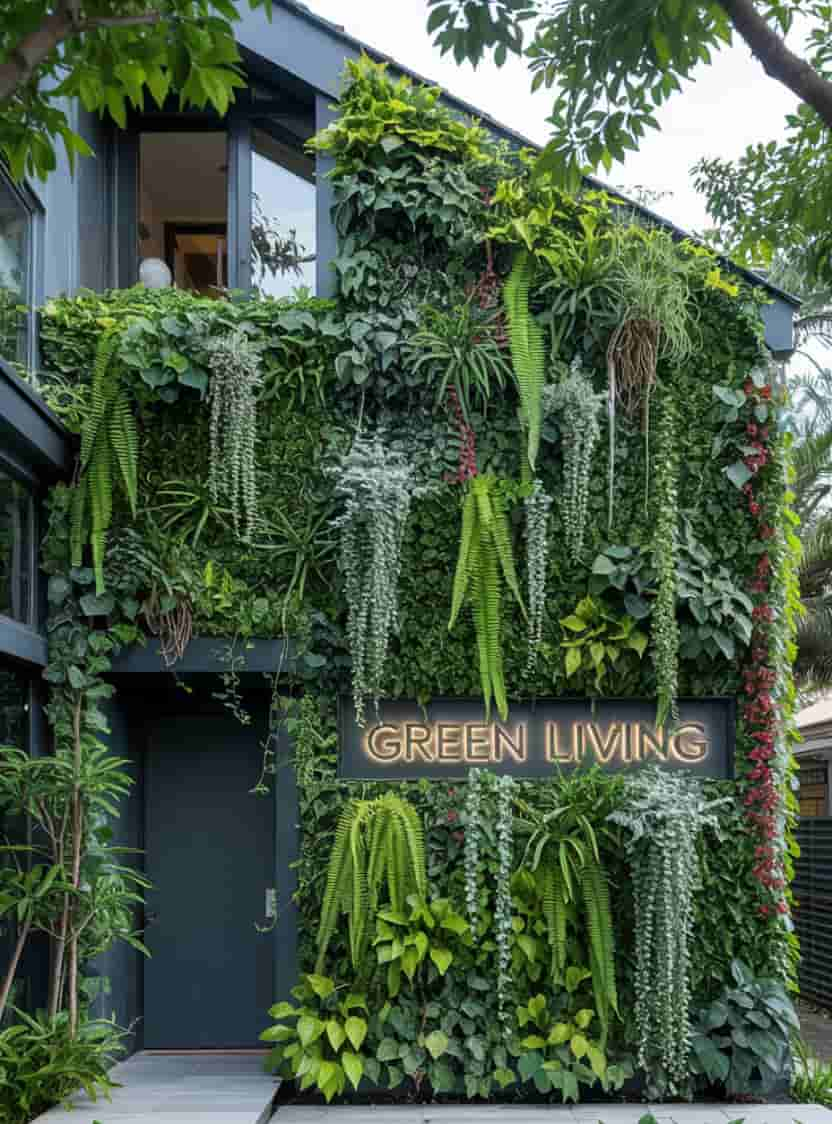
A green facade seamlessly integrates architecture with nature, transforming a plain exterior into a vibrant, living surface.
Using vertical gardens, climbing vines, or modular plant systems, these facades bring freshness, biodiversity, and eco-friendly benefits to your home.
Beyond aesthetics, green walls offer thermal insulation, air purification, and noise reduction—making them a practical choice for urban living.
They’re particularly useful in cities where ground space is limited, creating vertical green spaces that soften the look of concrete-heavy structures.
Use trellises, mesh frames, or planter boxes to guide plant growth. Select hardy, low-maintenance plants like ivy, ferns, or flowering creepers for longevity.
A well-maintained green facade adds color, texture, and environmental value, making your home not only beautiful but also a little greener.
8. Metal Panel Cladding
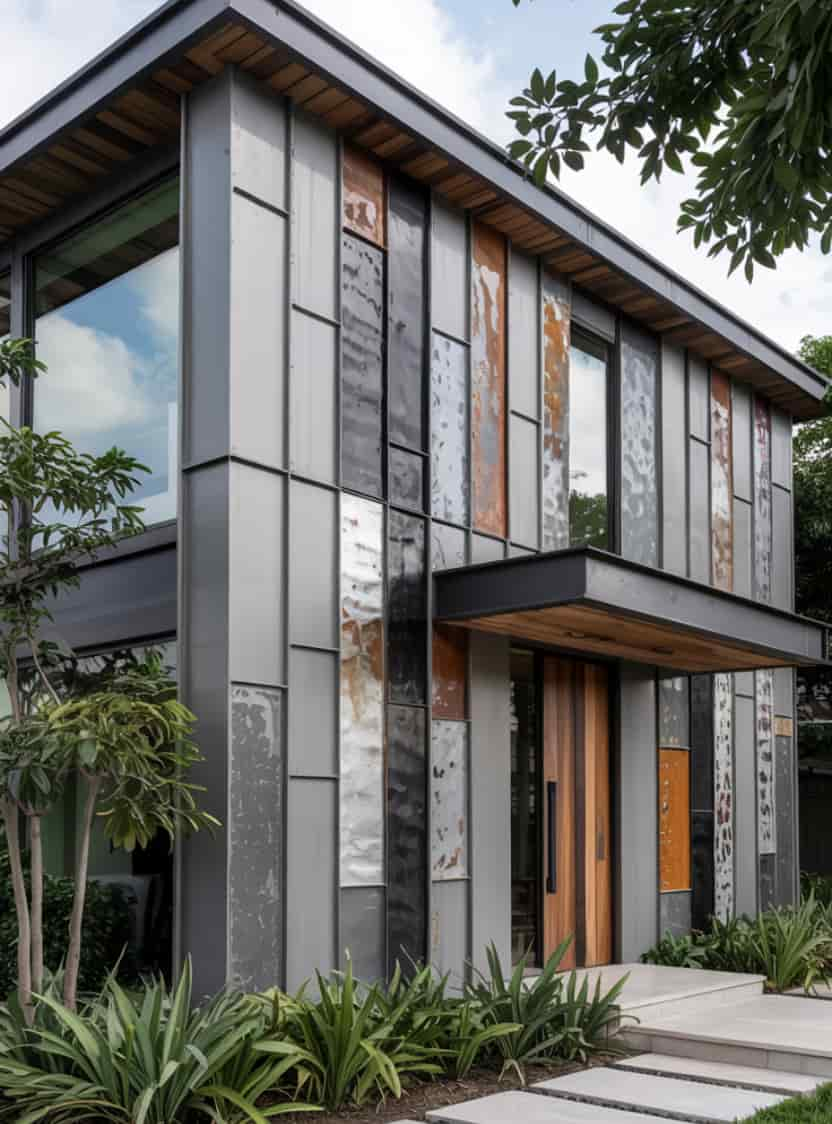
Metal panel cladding adds a sleek, industrial, and futuristic edge to home exteriors.
Popular materials like aluminum, zinc, or corten steel are not only durable and weather-resistant but also offer a wide range of textures and finishes—from brushed silver to matte black or even rust-toned surfaces.
These panels can be arranged in geometric grids, vertical lines, or custom patterns, creating a dynamic and expressive facade.
They are often used in modern homes to emphasize strong horizontal or vertical design elements.
Metal pairs surprisingly well with warm materials like wood and natural stone, softening its cool tones.
It also reflects light beautifully, changing appearance throughout the day.
Low maintenance and highly durable, metal cladding is ideal for those seeking a bold, contemporary look that lasts.
9. Louvered Sunshade Facade

Louvered facades combine function with modern elegance, offering privacy, sun protection, and architectural interest all in one.
These angled panels—typically made from wood, aluminum, or steel—are installed over windows, balconies, or entire sections of the facade to control light and airflow.
By diffusing sunlight, they reduce glare and help keep interiors cool, especially in hot climates.
Louvers can be fixed for a clean, minimal look or adjustable for greater flexibility.
Their linear patterns create fascinating shadows that shift with the sun, adding a dynamic visual element to the exterior.
This style works beautifully in contemporary homes, tropical settings, and energy-efficient designs.
Louvers also enhance security and privacy without compromising aesthetics, making them both beautiful and practical.
10. White Stucco with Wood Accents
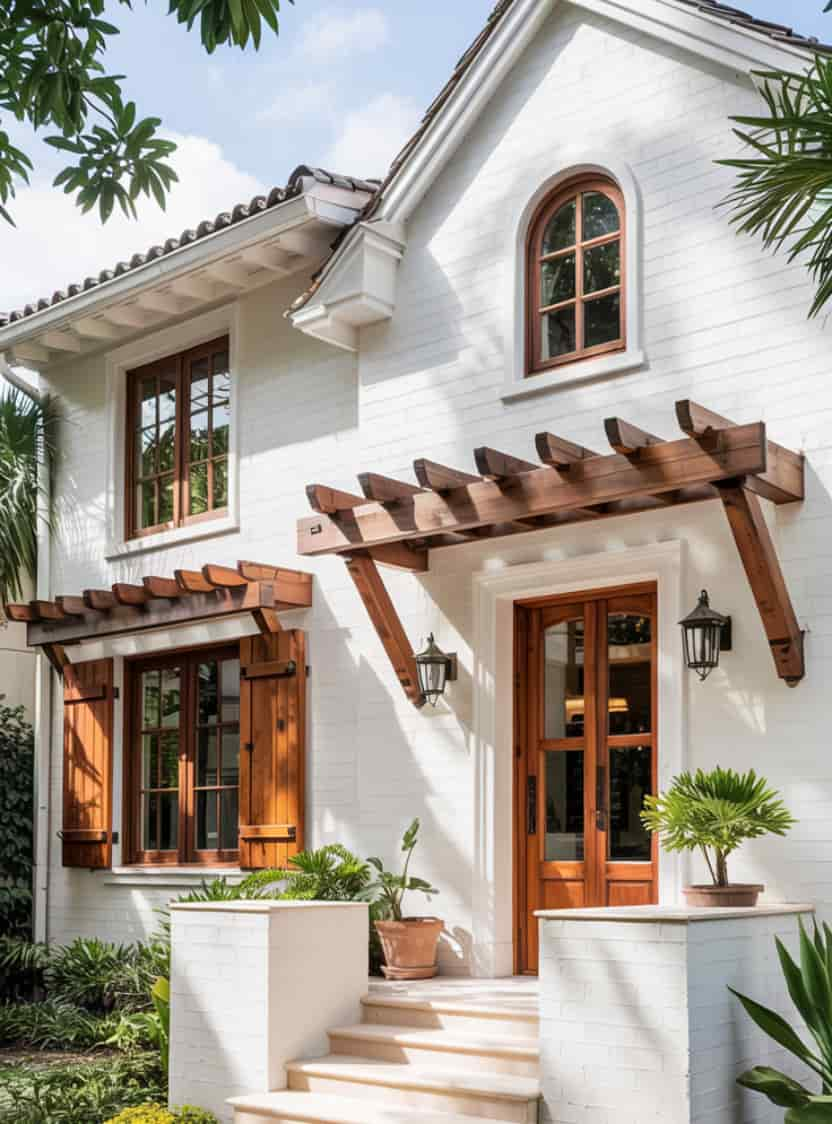
White stucco exteriors offer a timeless, Mediterranean-inspired charm that feels clean, calm, and airy.
When paired with warm wood accents—such as beams, window shutters, pergolas, or entry doors—the facade takes on a grounded, earthy warmth.
This combination is especially effective in sunny climates where the white reflects light and the wood adds richness.
The texture of stucco adds subtle depth, while the natural grain of timber creates contrast and detail.
This facade style is popular in coastal, resort, and minimalist homes where simplicity meets sophistication.
You can enhance the look with terracotta planters, gravel paths, and native landscaping for a complete design.
Together, white stucco and wood deliver a light, inviting, and effortlessly elegant exterior.
11. Mixed Material Facade
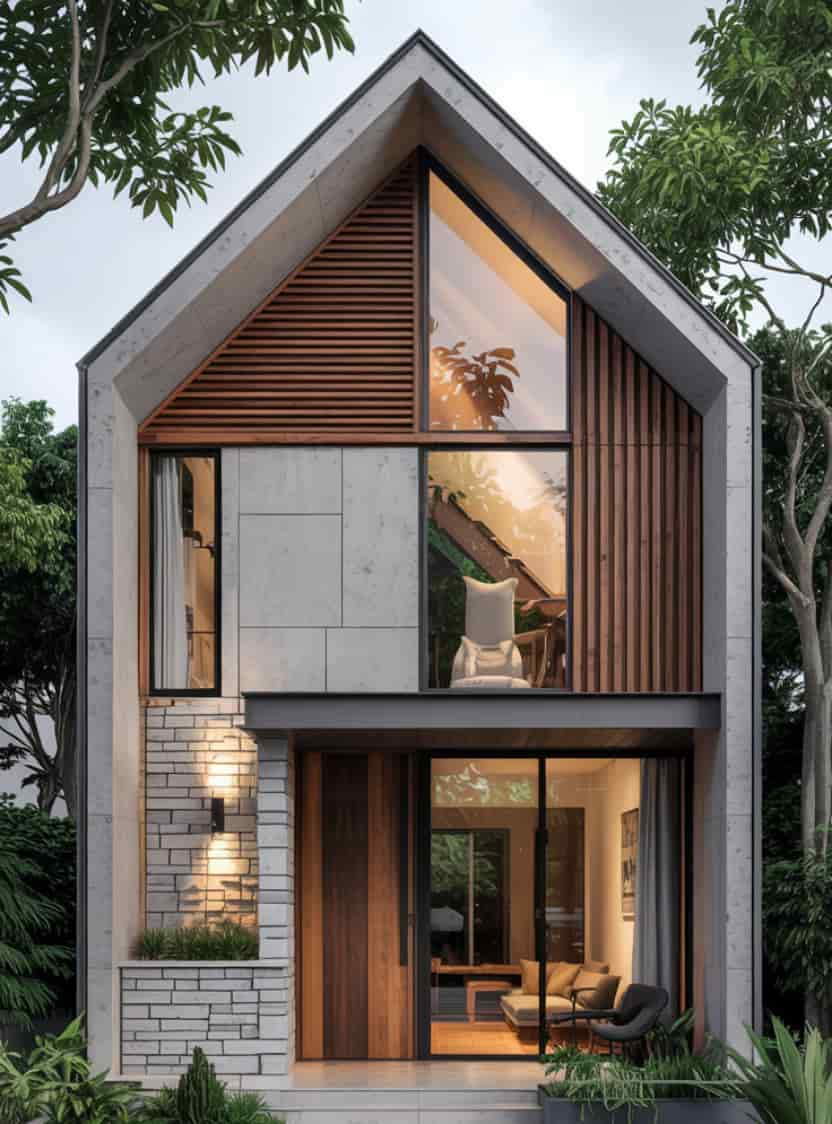
A mixed material facade offers a highly customizable and layered look by blending various textures and finishes—such as concrete, wood, glass, brick, and metal—into one harmonious exterior.
This approach allows for creative expression while providing visual contrast and architectural depth.
For instance, use stone around the base for grounding, timber slats for warmth, and glass for light and openness.
The key is in maintaining balance—matching colors and scale so the design doesn’t feel chaotic.
This facade type is perfect for modern custom builds or designer homes where creativity meets control.
It works especially well for highlighting key features like entryways or feature walls.
Not only does it look impressive, but it also tells a story of materiality, function, and form.
12. Double-Height Entry Facade

A double-height entry instantly elevates your home’s presence and gives it a stately, luxurious feel.
Featuring towering doors, oversized windows, or extended columns, this design choice draws the eye upward and emphasizes verticality.
It’s particularly effective in homes where the foyer or front hallway is designed to be a showpiece.
Large glass panes can be used above the entry to bring in light, creating an open, welcoming atmosphere.
Complement the look with tall planters, modern lanterns, or symmetrical landscaping to reinforce the grandeur.
This facade style blends well with both classic and modern architecture and adds value through curb appeal.
It not only enhances the entrance but also defines the entire home’s identity with confidence and elegance.
13. Sloped Roof with Textured Siding
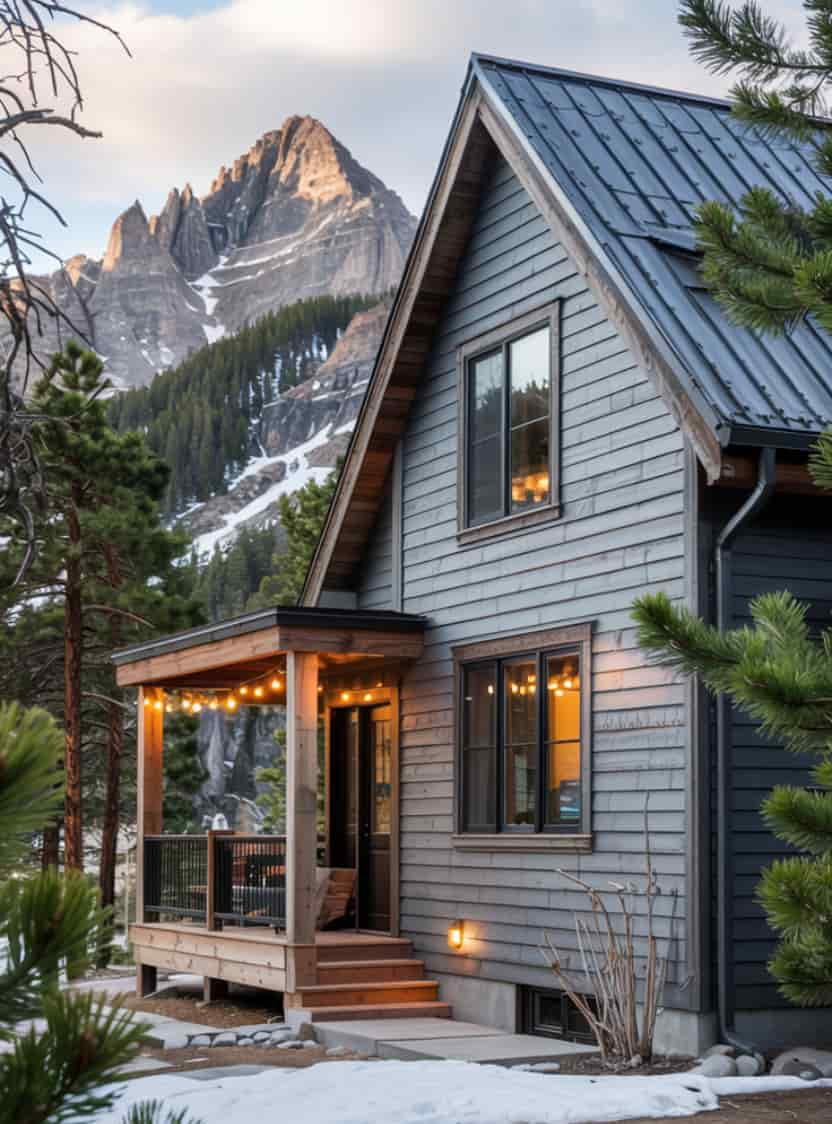
A sloped roof, when paired with textured siding, brings both charm and practicality to your home’s facade.
The angled rooflines add dynamic geometry while also serving functional purposes like water drainage and improved insulation.
Textured siding—such as shiplap wood, fiber cement boards, or decorative tile—adds tactile interest and character to otherwise flat surfaces.
This combination is ideal for modern mountain homes, Scandinavian-inspired builds, and rustic retreats.
The contrast between the clean roof angles and layered wall finishes creates visual harmony.
It’s also an opportunity to play with materials and tones—think charcoal siding with a natural wood gable, or white siding under a dark metal roof.
The result is a cozy yet contemporary home that looks well-composed and inviting.
14. Geometric Shapes & Modular Design
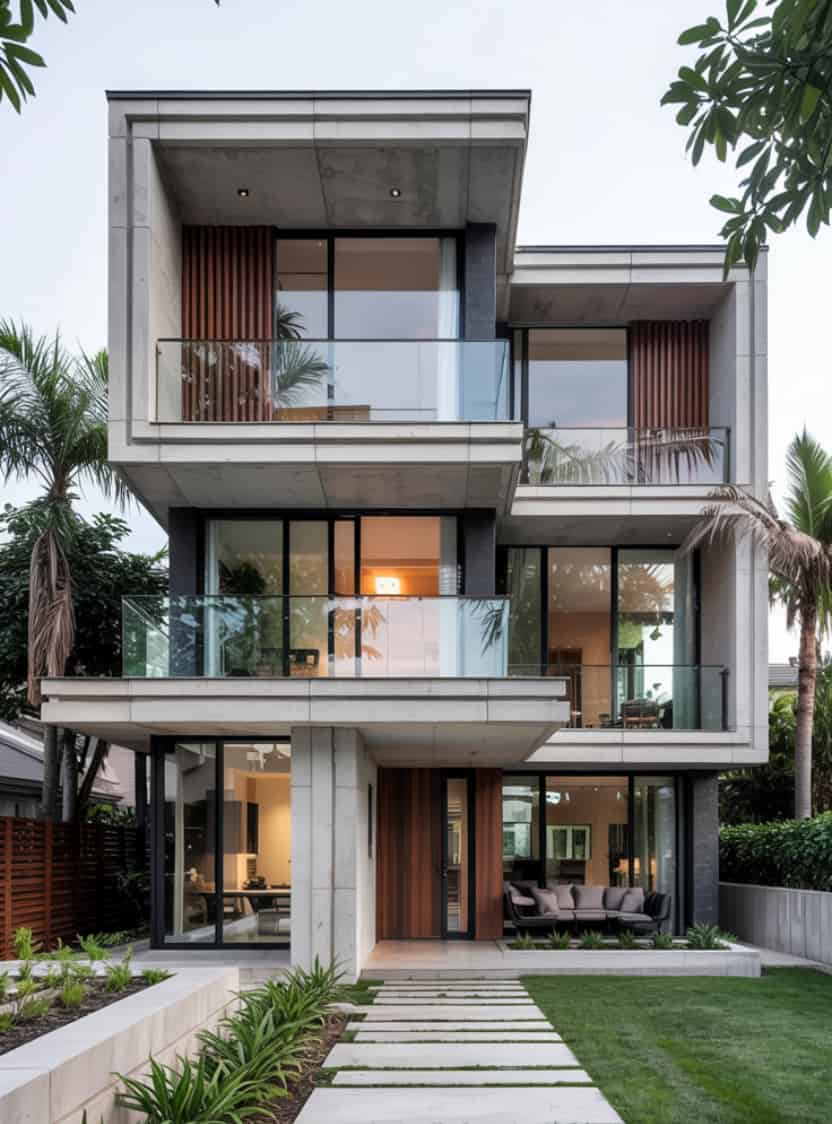
Facades built around geometric and modular design concepts bring bold lines, smart symmetry, and architectural rhythm to the forefront.
Boxy forms, cantilevered sections, stacked layers, and repeating patterns all contribute to a look that feels both organized and forward-thinking.
This approach is especially popular in ultra-modern homes, where the shape of the house itself becomes a design feature.
Modular layouts can help define living zones, add balconies, or create shaded overhangs.
The materials used—often concrete, metal, and glass—reinforce the precision and sharpness of the form.
This facade style is ideal for homeowners who want to make a strong architectural statement. It’s clean, minimal, and unapologetically modern.
15. Pergola + Courtyard Entry Facade
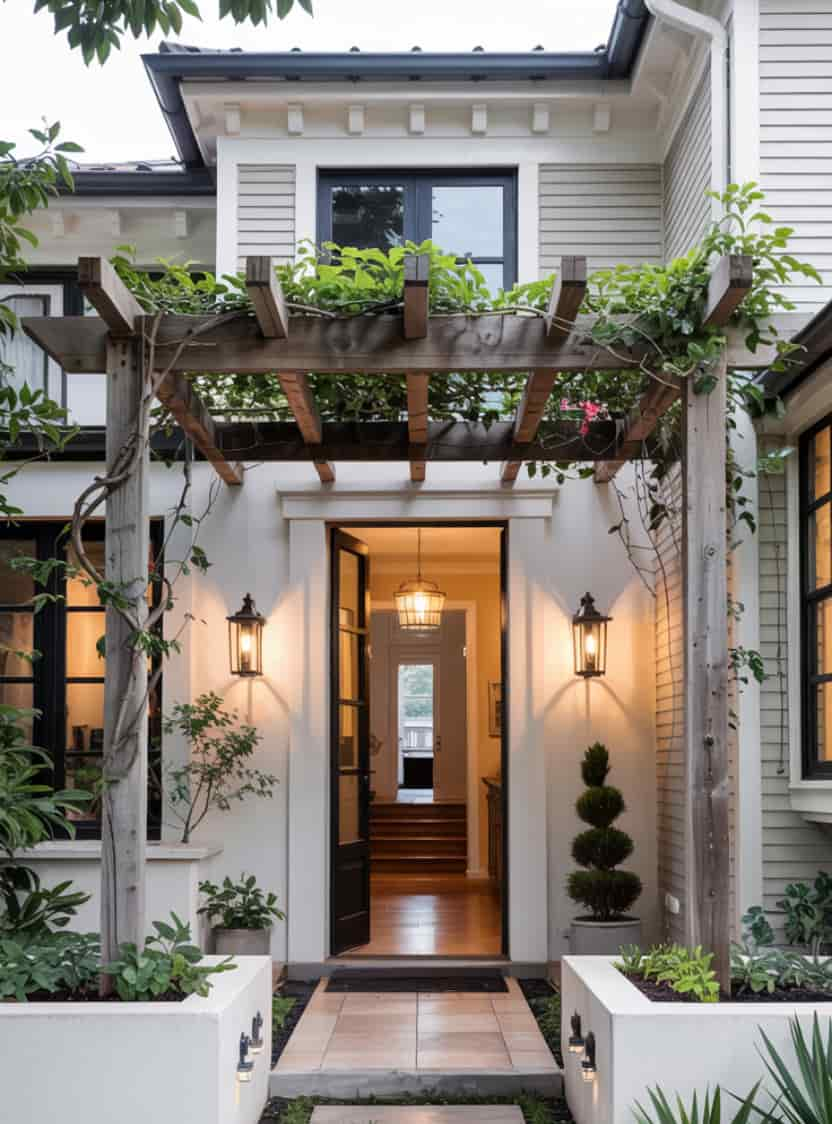
Adding a pergola and courtyard to the entrance of your home creates a warm, inviting, and architecturally layered facade.
The pergola acts as a transitional space between indoors and outdoors, providing partial shade and visual interest with its open-beam structure.
Often made from timber or powder-coated steel, pergolas can be dressed with vines, lanterns, or string lights for added charm.
The courtyard itself adds depth and privacy to the front elevation, creating a peaceful buffer from the street.
Use stone or tiled paths, planters, and seating areas to make the space functional and serene.
This facade style suits Mediterranean, bohemian, and modern rustic homes.
Together, the pergola and courtyard offer texture, shade, and a sense of tranquility right at your doorstep.
Useful Articles:-
- Modern Villa Exterior Designs Ideas That Redefine Luxury Living
- Modern Pergola Ideas for Luxurious Backyard Living
- 10 Inspiring Modern Front Yard Ideas for a Beautiful Home Exterior
- 10 Lazy River Pool Backyard Ideas for Year-Round Enjoyment
- Home Bedroom Refresh Ideas: Quick & Simple Updates You’ll Love
Conclusion:-
Choosing the best facade house design depends on your lifestyle, climate, and architectural taste. Whether you prefer bold geometry, rustic charm, or eco-conscious greenery, these facade design ideas can transform your house into a masterpiece. With the right mix of materials, lighting, and design elements, your facade can truly reflect who you are—before anyone even steps inside.
